Between Puerto Rico and Trinidad the island chain known as the Lesser Antilles contains at least twenty-five inhabited islands of significant size, divided among around fifteen political units, either independent nations, or remnant overseas territories lingering from the colonial period. In theory, it could be possible to visit most or all of those when traveling between the Greater Antilles and mainland South America. However, for reasons of logistics and practicality, which should be obvious, doing so, especially during a long bicycle tour, would be excessively difficult. Instead, choosing a few of the more interesting islands and bypassing the rest would normally be the most common choice for travelers going that way. My criteria for selecting the islands I would visit included: the possibility of arriving or departing by sea, the presence of World Heritage Sites, and the possibly of observing some cool birds, in keeping with the general themes of the World2 Tour.
My choices were: Guadeloupe, Dominica, Saint Lucia, and Saint Vincent and the Grenadines. Each of these shared the characteristic of being a fairly small island, and so, not lending themselves to much in the way of long-distance cycling. However, each also contains a modest amount of undeveloped land, usually a forest reserve near the center of the island. For that reason, I had hoped to be able to camp for several nights along the way, an activity that has been absent from my itinerary of late. Unfortunately, those regions were always in the mountainous portion of the island and were thickly vegetated, so that option was not really possible, again leading to continued excesses in terms of expenses. On the other hand, each island possessed its own aspects that were distinctive, such as language, urban design, topography, and roadway conditions, which, at least, provided a certain level of variety.
Guadeloupe
This stop turned out to be one of my least favorite of the Tour so far, in part due to its own characteristics, but also thanks to logistical troubles once again brought about by everyone’s least favorite mode of transport. Annoyingly, there are no sea transport options at all in the northern Antilles, and, while I am sure that I remember seeing a direct flight from Puerto Rico to Guadeloupe several months ago when I was planning this section, at the time of my visit the only available option connecting those islands involved a stop on the Dutch island of Sint Maarten with a change of airlines. That, in itself, would have been less than ideal, but acceptable, if everything had worked properly.
For the first leg of that flight I was charged $US 188.00 in baggage fees for my one normal bag and the bagged bike, a total that was roughly equivalent to the amount I paid for my seat for the forty-minute-long flight. For decades, cyclists have complained about excessive fees charged for uncommon baggage, with the usual claim from the airlines that this was to account for the special handling such items were to be given. Of course, most of us have always realized that there really wasn’t anything special
about the way our items had been treated. They were consistently tossed on the check-in belt along with everyone else’s bags, thrown up onto the same cart to be wheeled over the tarmac, and dumped on the same conveyor that lifted everything up to the aircraft (on one other flight during this Tour I had the pleasure of watching my bike fall off such a conveyor and land with a thud on the ground.) All of this would be begrudgingly accepted as part of the normal tedium of air travel, assuming that the one most important condition was met: that the item which was charged such high baggage fees should actually be loaded on board the airplane in question. In my case, the fact that this didn’t happen became clear as I attempted to gather my items before the connecting flight in Sint Maarten. A missing bike during a bicycle tour obviously brings things to a rapid halt.
It seems inconceivable that, with all the bar codes slapped onto checked baggage these days, any airplane would push back from the gate unless all of its assigned bags have been loaded, however that still seems to be beyond the capabilities of the wonderful system that supposedly serves us. On the bright side, before moving on I was able to determine that the bike was still in San Juan, and hadn’t been sent off to Europe, or some other far-away place. The airline stated that it would be forwarded on to Guadeloupe on the next available flight, so at least I was spared the baggage fee for the second leg. Of course, this was on a Saturday, and the same flight was not in service on Sundays and, for some unknown reason, the bike was not sent on the Monday flight either. It did go out on Tuesday, but that flight was delayed, and so it missed the connection in Sint Maarten. I finally received it late Wednesday evening—four days late—costing me three extra nights lodging and a round-trip taxi fare back to the airport to pick it up. All the while I had nothing to do but sit around in the Guadeloupian capital, Pointe-a-Pitre, a rather charmless city where most things of potential interest are closed on Sundays and Mondays. The only useful task I accomplished during that period was getting a haircut, though that was fairly necessary at that time.
This unwelcome respite was made even worse by the fact the current news at the time, which was given essentially continuous coverage, was the ongoing events in the Bahamas. I had been on Grand Bahama Island just two and a half weeks earlier, and I knew that the direct hit it was about to receive from Hurricane Dorian, now much more monstrous than the storm that glanced by my location in Puerto Rico not long before, was going to be catastrophic. I was only on that particular island for a day and a half, so I did not meet a very large number of people, but those I did were all pleasant and friendly, and I wondered what had happened to them. Most had certainly lost their homes, and perhaps some lost their lives. This cast a rather gloomy shadow over the recent section of the Tour, of a type that I had never experienced before. When I was on the Bahamian island of Andros, not far away, and took a brief swim in the ocean, I was struck by just how hot the sea was, more so than I ever remember experiencing previously. At the time, I thought that if a storm came through the area that it was going to become incredibly intense. This was an example of a case when I really wish I had been wrong in making such a prediction.
I had originaly planned on two full days of cycling, with some birding mixed in, around the western side of Basse Terre Island, the more topographically interesting of Guadeloupe’s two main islands. As it turned out, being forced to alter that plan may have been for the best, since I don’t think I would have enjoyed that particular route very much. Guadeloupe is densely populated, and the settled areas have not been built out in an especially effective manner, with heavy traffic levels on roads that are not well suited for cycling. I had only the morning of the final day, before I was to take the ferry run by L’Express des Iles to Dominica, available for a brief episode of cycling. That may have been enough after all.
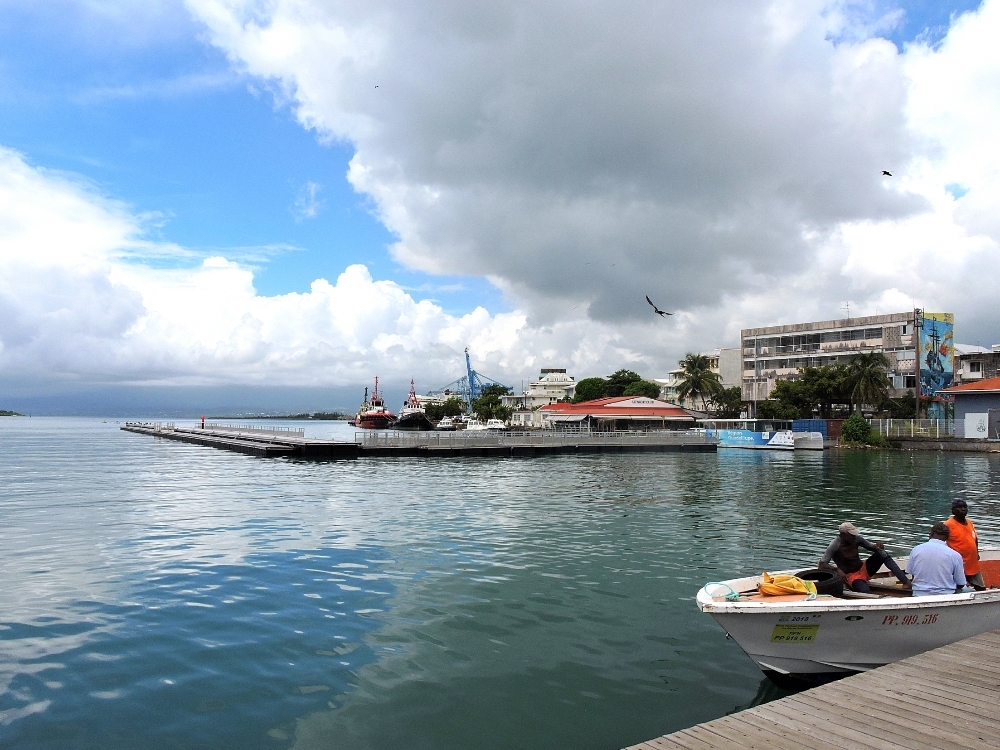
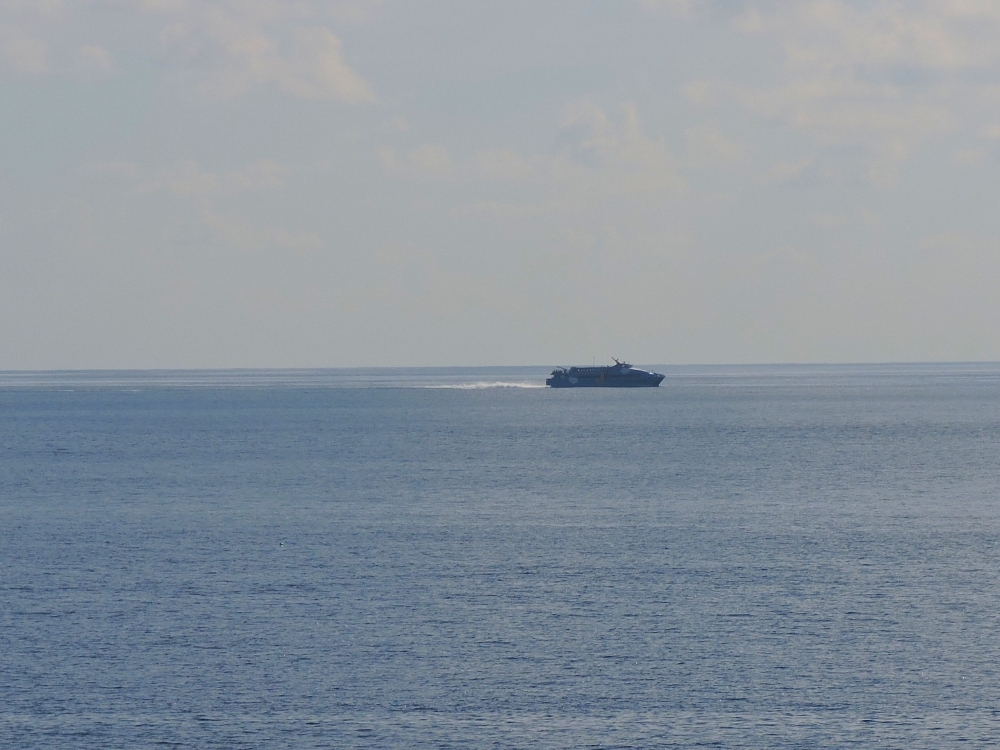
Dominica
The next island was more to my liking. Dominica has the lowest population density of the islands in the region, though it is still fairly high, and it is well known for maintaining a higher level of undeveloped land in a natural state compared to most Caribbean islands. Like Puerto Rico, Dominica took a severe pounding from Hurricane Maria two years earlier, but the nation seems to have recovered well and I did not notice any significant damage remaining, though I am sure there must have been some. Culturally, the feel was typically Caribbean, a bit disheveled, but with a noticeably Jamaican flavor. Road conditions were reasonable, though there were too many speed bumps placed across the lanes whenever the road passed through a settlement, which happened fairly often.
I also had to modify my cycling route in this island and, once again, that may have been for the best. My plan was to ride a loop from the capital, Roseau, in the southwest, up along the west coast to the north end of the island and then back though the highlands in the center. However, during my short rude on Guadeloupe, another of my rear bearing cartridges wore out, prematurely, and I had to spend my first morning on the island making that repair. That afternoon I went on a fairly short check-out ride, to Scott’s Head, at the southwestern tip of the island, and quickly learned a topographical fact about the islands of the Antilles. That chain is of volcanic origin, and its islands now consist of rugged terrain that, in places, is significantly steep. Most of the roads that venture away from the coast for any distance have been built without much effort put forth to minimize their inclines. This would not be prohibitive under normal circumstances, but, combined with the typical Caribbean heat and humidity, cycling often felt oppressive. This was made worse because my routes were usually on the western, leeward, sides of the islands, with a notable lack of any cooling breezes.
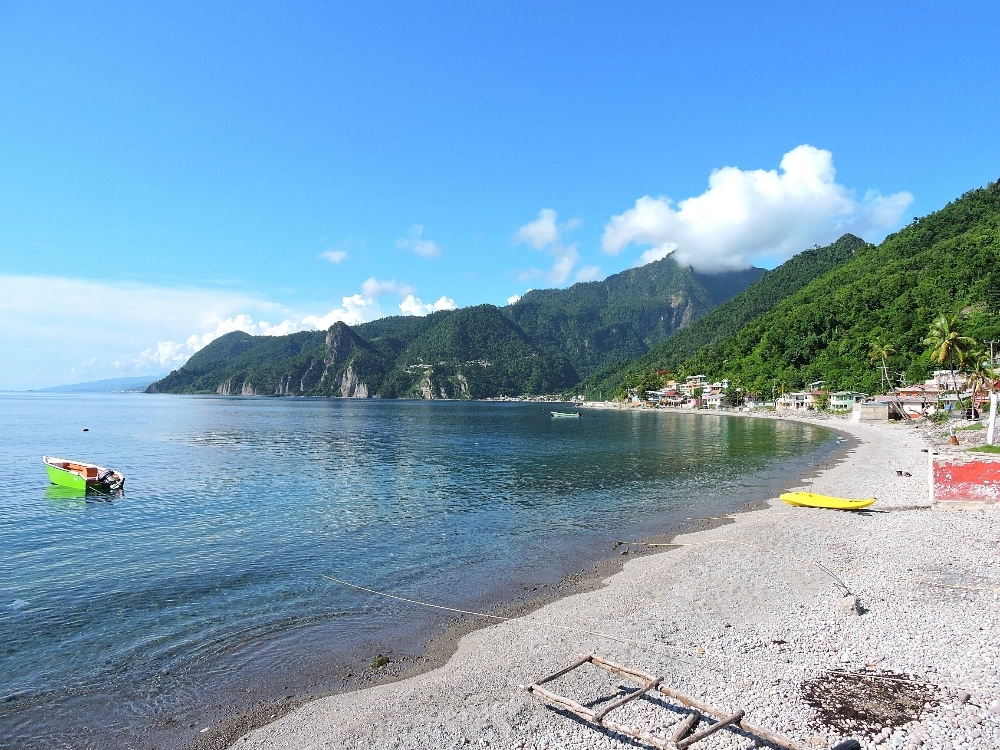
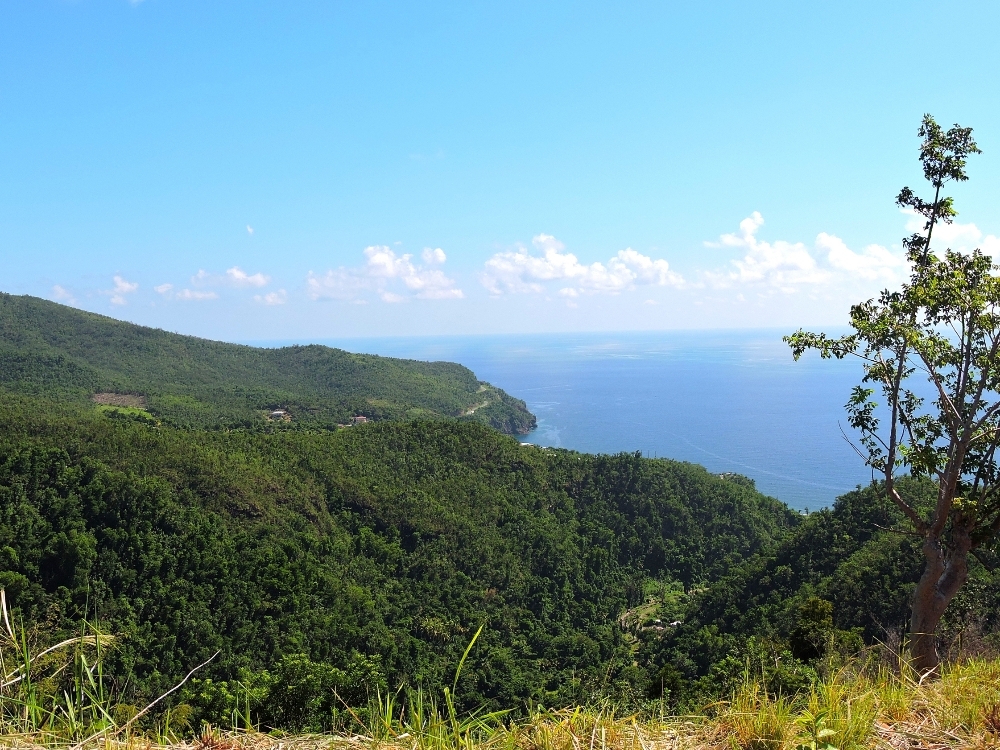
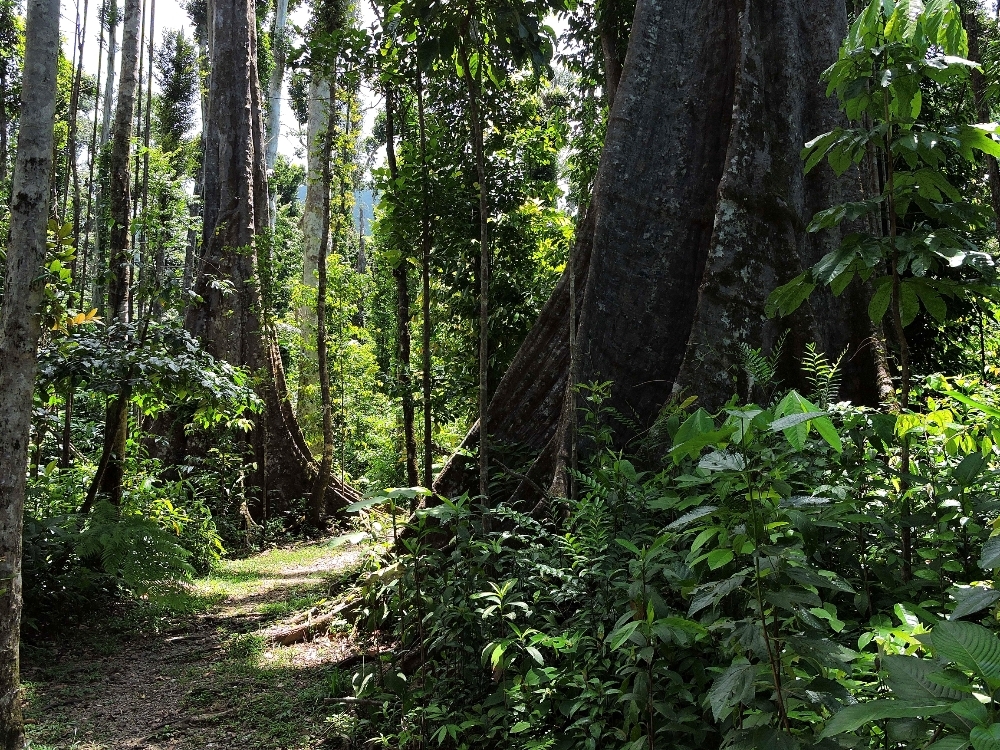
With the effective loss of one day, I changed my plan for the one full day I had left. Instead of a loop, I would ride up to the nice birding hotspot in the northwest of the island, and the double back to Roseau. However, that birding site was located above 600 meters above the sea, and the climb there, along a road not much wider than a typical bike path, had a number of sections with greater than a fifteen percent grade. The heat was particularly stifling that day and, though the total round trip was only around ninety kilometers, I am not too proud to admit that it wiped me out on that day. Consequently, I also cut back my riding plan for the following morning, so I would not risk missing my next ferry connection later in the afternoon.
Saint Lucia
The next island along my hopping route was Saint Lucia, and I was able to transfer there using another Express des Iles ferry, however, thanks to the airline fiasco, the ferry available on the day I needed to go sailed in the evening, instead in the morning, as on other days. This caused another modification of my route on that island, which contributed to a rushed feeling overall. That was a little unfortunate, because I quite liked Saint Lucia. The towns on that island seemed to have been built in a slightly more organized and traditional manner, which I always appreciate. The roads were probably the best of any of the four islands in this section, though, correspondingly, traffic was a little heavier. The less-developed areas seemed pleasingly green, but a little more open in character. On the other hand, while the climbs along the route gained less elevation than they had on Dominica, they were only slightly less steep, and the heat was equally oppressive. With that in mind, I once again shortened my already-short route to compensate.
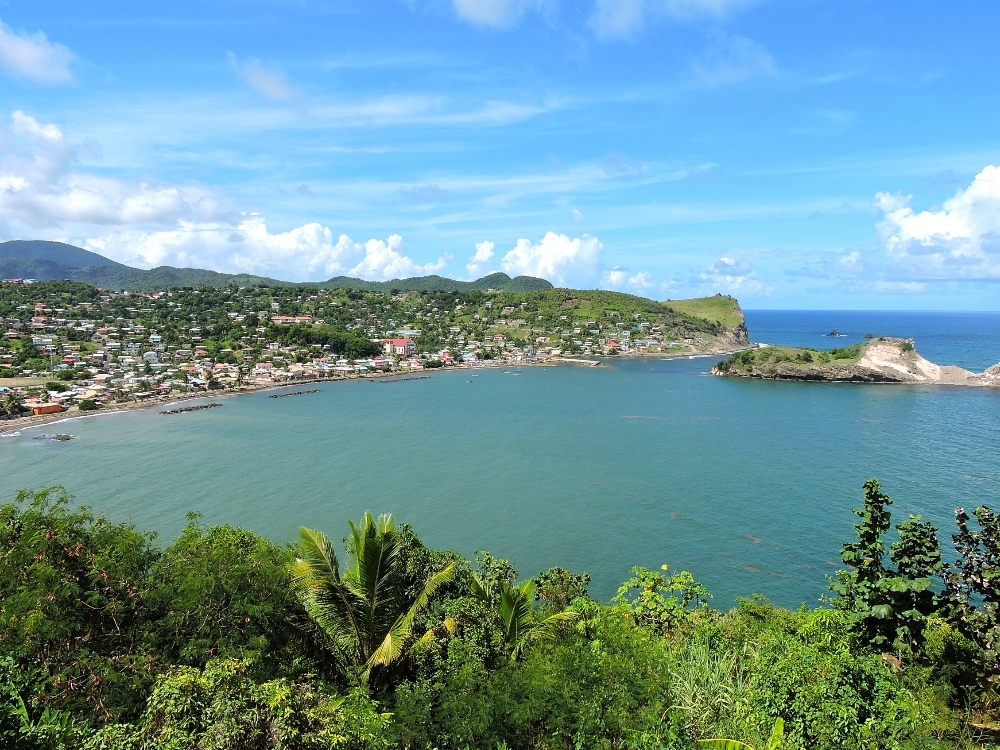
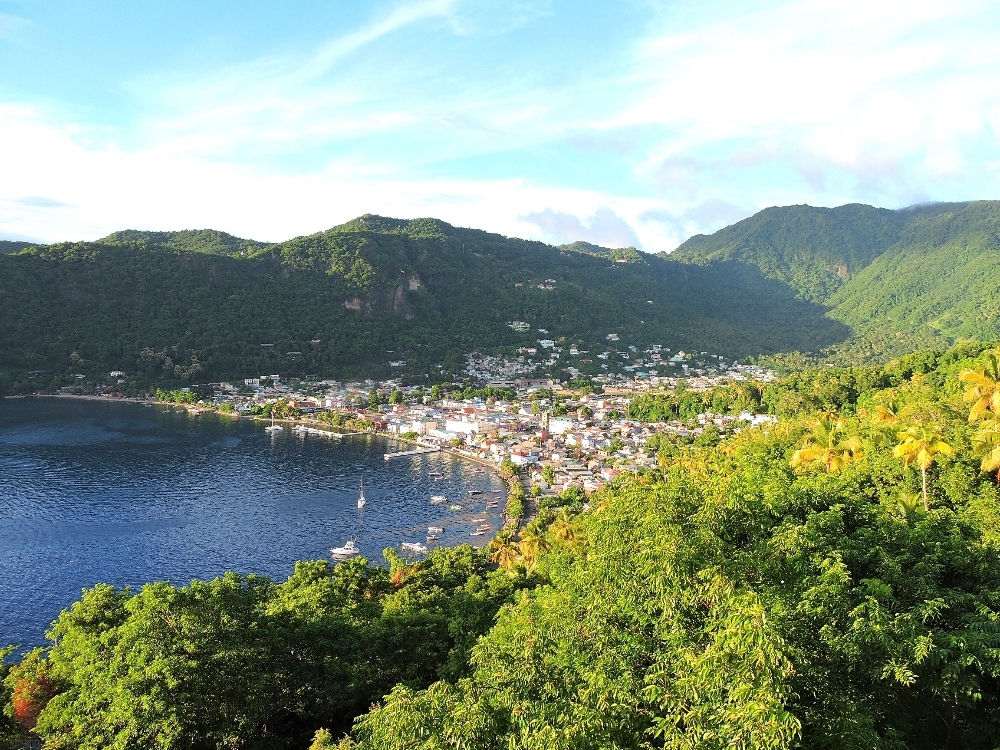
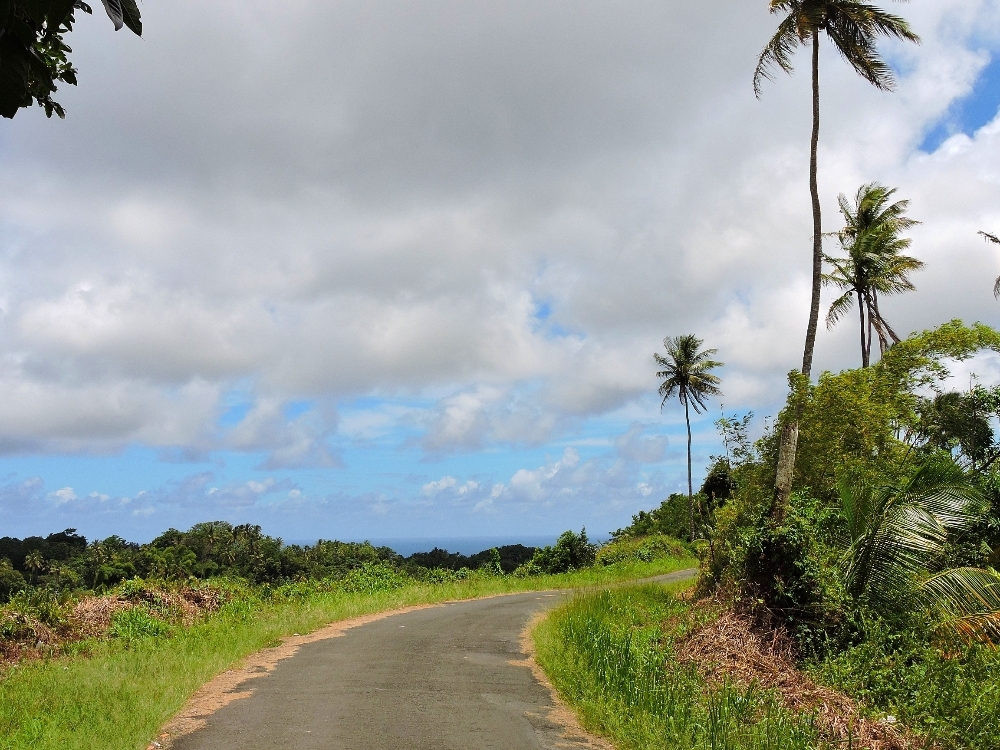
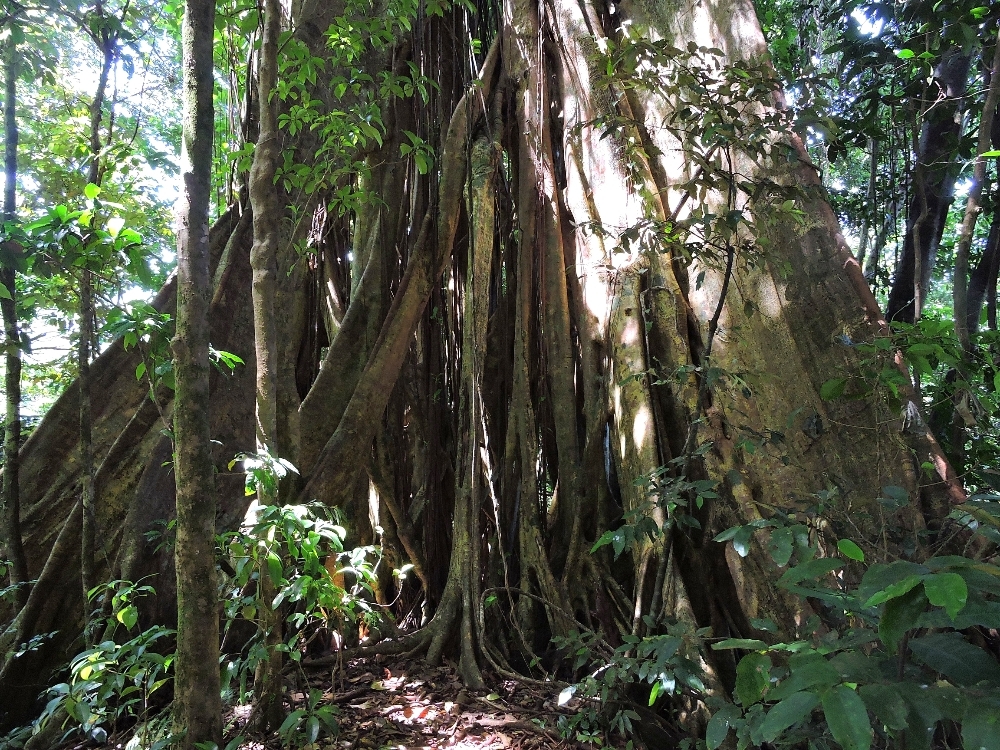
Even after doing that, I added some unnecessary stress to that stop due to a rookie mistake I should not have made. Unfortunately, there were no further ferry connections available, so a flight was required to reach the next island. Like a few other islands in the region, Saint Lucia has two airports, an older, smaller airport in the capital, Castries, in the north of the island, and a newer International terminal in the opposite, southeastern, corner. With the somewhat rushed process I employed when booking the flight, I assumed that since I was leaving for another country, I would depart from the International Airport, so I ended my route near there, with plans to ride to the terminal in the morning, pack the bike, and check in with plenty of time leftover. Had I been paying more attention, I would have noticed that flights to neighboring islands leave from the smaller airport. In fact, I only noticed this circumstance at 6:00 AM on the day of departure, four hours before the departure time. One of the benefits of visiting a small island, however, is that no place is very far away from any other, and I had just enough time to arrange local transport back to the capital with only a few minutes to spare before check-in closed.
Saint Vincent
The largest island of the nation of Saint Vincent and the Grenadines, Saint Vincent was a late addition to my route plans. I had originally discounted a stop there because flying would be required, however, I later changed my mind since an especially beautiful, but rare, parrot species makes its home in its remaining forests, an ironic choice that will be mentioned again in the Birding section. Because of that, and because the airport, the capital city, and the best birding spot are just thirty kilometers apart, I made this my shortest island stop, with just one full day to have a look around. That may have been slightly unfortunate, since the island seemed very pleasant to me, and the small portion I saw seemed to possess generally good cycling conditions, with terrain that was slightly less severe than the other islands.
One other quirky anecdote is relevant to that particular stop. When I had just arrived, and was going through Customs, the agent asked me what was in the big, white, tyvek bag I had brought with me (thankfully, it was actually put on the airplane that time.) When I
replied that it was a bicycle, she rolled her eyes and sighed a little. She then informed me that the usual policy
would require me to leave a cash deposit with the Customs Office to ensure that I wouldn't try to abandon the bike on Saint Vincent. I probably looked a little taken aback by that unusual statement as I stood there, anxious to get the process over with. In a few seconds, it became clear that she didn't want to deal with the extra paperwork that procedure would entail, so she simply waved me through. I then exclaimed, as I made my way, that she needn't worry, since the bike was like a part of my family, and I would sooner cut off one my own body parts and leave that behind, than maroon the bike on Saint Vincent!
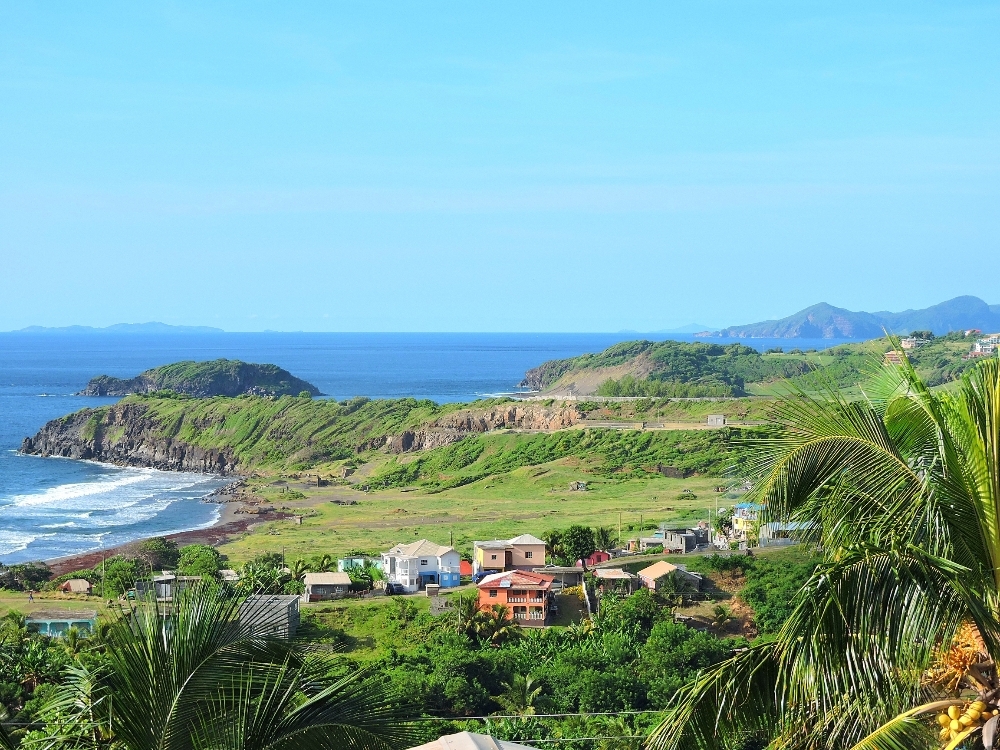
This section of the Tour proved to be expensive, logistically challenging, and, honestly, rather exhausting. Clearly, this type of region is not particularly well suited for a long tour, but, since I may not have a chance to visit that part of the World again, I am glad that I made it work, albeit in an abridged manner.